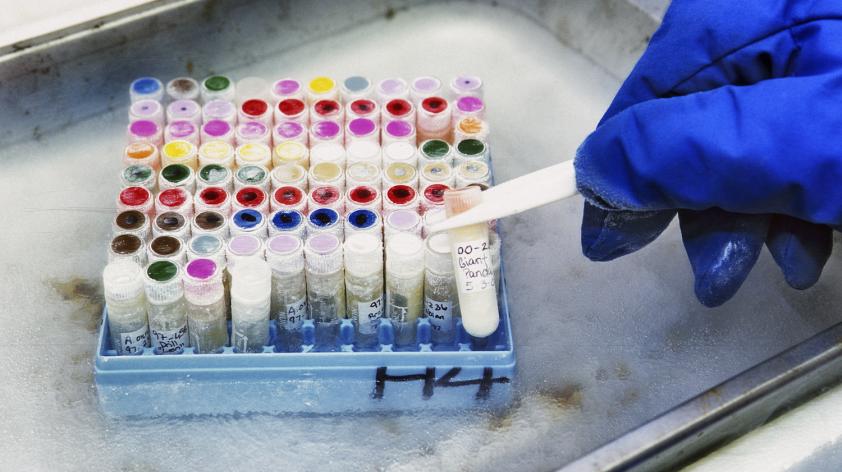
A tribute to our silent partner
San Diego Zoo Global's Frozen Zoo® is a unique repository, filled with tens of thousands of vials of sperm, oocytes, embryos, reproductive tissues and cell lines from thousands of animals, from the tiny Pacific pocket mouse to the enormous African bush elephant.
These vials of cells and tissues are frozen and stored by the Reproductive Sciences and Conservation Genetics staff.
As awareness of the existence and role of the Frozen Zoo as a tool to end extinction increases, a major partner in its existence and growth remains quietly behind the scenes. The Disease Investigations pathology staff is responsible for processing every animal that passes away at the Zoo and Safari Park, including collection specimens as well as native wildlife residing on grounds.
The pathologists’ job is to monitor the health of these populations and diagnose any possible diseases they may carry. To effectively do this they perform a necropsy on each animal, taking samples from every region of the body.
During this process they identify key reproductive organs such as testes and ovaries where sperm, oocytes and stem cells reside. This is no easy task as ovaries and testes come in different shapes and sizes and can be located in different areas depending on the species. Imagine trying to locate the ovaries in a petite puaiohi, a small Hawaiian songbird. It takes great patience and knowledge to do this job well.
The Reproductive Sciences division requests portions of testes and ovaries so we can collect the sperm and oocytes. This relationship between Reproductive Sciences and Disease Investigations began in 1979 when Dr. Barbara Durrant, Director of Reproductive Sciences, began requesting whole reproductive tracts from deceased animals to document their unique anatomical features. These were among the first detailed observations of basic reproductive anatomy in some rare and less studied species.
In addition, these photographic and quantitative records have led to improvements in artificial insemination instrumentation and an understanding of reproductive seasonality. In 1980, Barbara began collecting and freezing sperm for storage in the Frozen Zoo. Ovarian tissue, oocytes and embryos were harvested, processed and frozen beginning seven years later.
As of today, well over 80% of the specimens frozen and stored by the Reproductive Sciences division were contributed by the Disease Investigations staff. Almost every day the Disease Investigations team locates, dissects out and sends requested samples for us to harvest important reproductive cells for future use in assisted reproductive technologies such as artificial insemination, in vitro fertilization, and embryo transfer. Our colleagues in Disease Investigations are significant partners in the success of the Frozen Zoo and we sincerely appreciate their conservation contributions over the last 4 decades.













